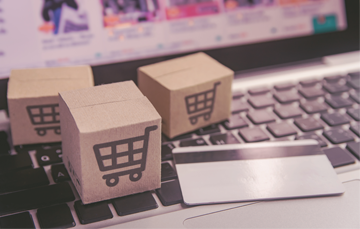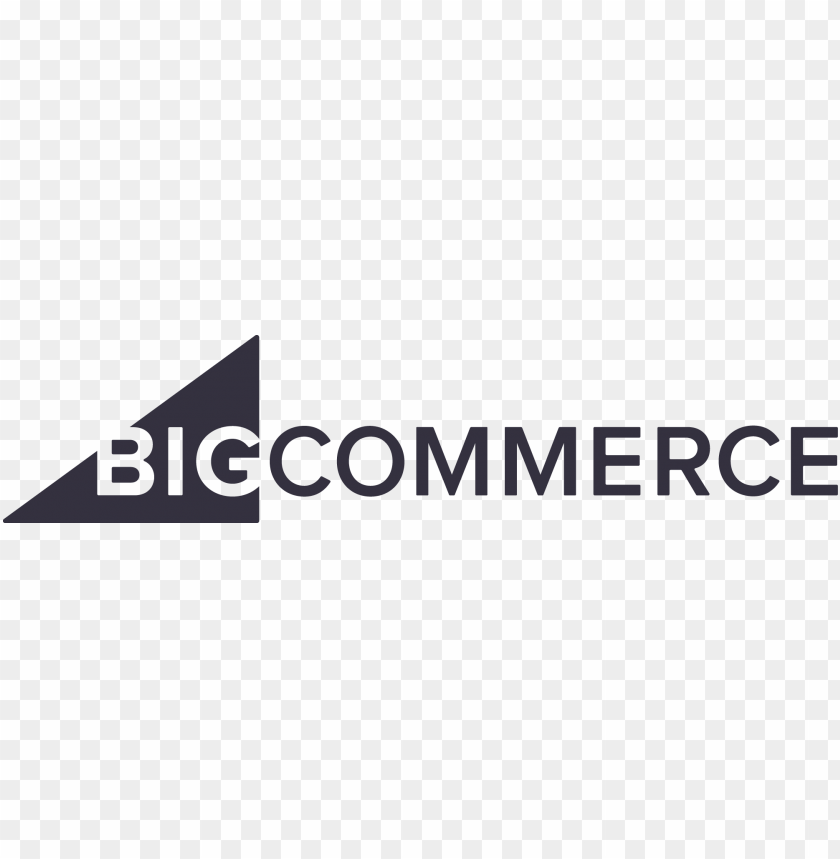B2b ecommerce
An increasing number of businesses place their purchase orders online. So, b2b ecommerce has been on the rise for years now and offers many opportunities. But because of the complexity in b2b, it’s not something you just do on the side. In fact, it requires a completely unique approach and strategy.
Content:
- Differences with regular ecommerce
- The benefits of b2b ecommerce
- The disadvantages of b2b ecommerce
- Which b2b ecommerce software?
- What about payments?
B2b manufacturers, brands and wholesalers find their way to ecommerce
Following on from retailers who focus on the consumer market, manufacturers, brands, wholesalers and distributors are also increasingly finding their way to ecommerce. Yet, online there’s still a lot to gain for many b2b companies.
For example, while many niches are already saturated within the consumer market, this is much less the case within the business-to-business industry. This means that, with the right online strategy, you can make progression relatively quickly and easily. In many cases customers are ready. Having enough buyers is a good first step.
With the right online strategy, you can make progression relatively quickly and easily.
 Another reason why b2b ecommerce is so promising, is the high number of repeat purchases. In addition to the fact that many buyers periodically order a large number of products, they often don’t feel like looking for a different supplier for each order. Simply, because the customer journey within b2b ecommerce is much more extensive than within b2c. Once they have found a good supplier, it’s very likely buyers will come back. Especially, when you make sure that your customers can easily repeat their orders.
Another reason why b2b ecommerce is so promising, is the high number of repeat purchases. In addition to the fact that many buyers periodically order a large number of products, they often don’t feel like looking for a different supplier for each order. Simply, because the customer journey within b2b ecommerce is much more extensive than within b2c. Once they have found a good supplier, it’s very likely buyers will come back. Especially, when you make sure that your customers can easily repeat their orders.
Differences between b2b and regular ecommerce
At the frontend, you sometimes see little difference between a b2b and a b2c shop. But behind the scenes, the processes are definitely different. For starters, the amounts that buyers spend in b2b are usually many times higher than within the b2c. This ensures a more extensive customer journey, partly because the information requirement is bigger. Moreover, in the b2b sector you often have to deal with customer-specific agreements. For example, about prices, delivery conditions or payment preferences.
Another thing that makes the process in b2b more complex is the fact that within the b2b industry different authorities work together. For example, buyer A may place unlimited orders from the entire range, while buyer B is only authorized to send orders up to a thousand euros. But the complexity can also happen on the b2b player’s side. For example, because some collections or products aren’t available to every customer or can only be purchased under certain conditions.
Within the b2b industry there are often different authority levels at stake.
And to add to this, within the b2b sector it often happens that a purchaser combines items, each of which has its own characteristics. This could lead to different delivery times per product, and it also happens regularly that these products have to come from different warehouses, or that part of the order isn’t (fully) in stock.
The benefits of b2b ecommerce
 B2b may generally be more complex than b2c, the ecommerce channel also offers a lot of possibilities and opportunities. Among other things, in the field of customer loyalty. In the traditional situation, if you were dependent on the skills of the sales department.
B2b may generally be more complex than b2c, the ecommerce channel also offers a lot of possibilities and opportunities. Among other things, in the field of customer loyalty. In the traditional situation, if you were dependent on the skills of the sales department.
Nowadays with a well-functioning ecommerce channel you can already work on customer loyalty before even talking to the prospect. Because just like with private customers, the customer journey of most buyers starts online. Who knows, maybe you get to tap into a target group you haven’t yet thought of yourself.
The fact business customers generally yield more than private consumers isn’t the only advance, their (purchasing) behavior is also more predictable. In combination with the data you can collect online, it’s easier to contact your customer at the right time. And with all the (new) information that you collect now, it will also be easier to draw attention to additional services or products at a suitable time. Consider, for example, selling a maintenance contract or some (spare) parts, so you can use your service as a new revenue model.
The disadvantages of b2b ecommerce
With the DIY ecommerce software within the b2c, you can sometimes launch a beautiful ecommerce shop within a few days. Within b2b however, launching an ecommerce channel can easily take several months. Where consumer-focused shops often have one customer environment and apply conditions that are the same for everyone, this is very different for an ecommerce platform with businesses as customer. In addition to the fact that customers, just like in the b2c sector, expect a smooth purchasing experience and good customer support, business customers often have additional demands.
Launching a b2b ecommerce website can easily take several months or more.
For example, many companies want to be able to manage their (repeat) orders themselves and to have access to their previous orders. In addition, it may be that volume discounts or customer-specific prices are used.
The more complex structure of a b2b ecommerce website also requires a more custom-made approach. And these are, in fact, the two main drawbacks of b2b ecommerce: the time to market is quite long, compared to consumer shops, and ususally a lot of money is spent on the software to get the b2b platform you want and your customers demand.
The stumbling blocks within b2b ecommerce
One of the tricky aspects of b2b ecommerce is that all departments of a company need to see the need for it. If there’s too little support within the organization – and therefore not all employees are willing to adjust their working methods – it becomes very difficult to set up a successful digital channel.
Customer contact, which will now partly take place through the online shop, also requires a different approach. In the old situation, an experienced account manager could probably have estimated what exactly the customer needed, based on a few keywords. But online, this works differently. Usually, you need to create a lot of new content.
The power of strong content
Good content is indispensable. If you have an assortment of about a hundred products, creating product descriptions is, at most, a tedious job. But in the b2b, it’s far more likely your offer consists of thousands of products and variations. If you don’t have the accompanying content in order, this can easily delay the digitization process for several months.
A tricky aspect of b2b ecommerce is that all departments of a company need to see the need.
So, good content is essential, but so is maintaining personal contact. In addition to the fact that b2b buyers may need tailor-made advice, especially when it’s their first purchases, their questions or problems are often urgent. This means good accessibility, both online and offline, is a must. Also, make sure that the different departments and systems in your company work well together, so you will know exactly what is going on with your customers. Suppose your customer contacts your business through different channels, he will appreciate he doesn’t have to submit his question multiple times, but can get to the point quickly.
Which b2b ecommerce software do I need?
 The number of b2b software providers may be smaller than the number of ecommerce software providers within the consumer market, but even for b2b players there’s more than enough to offer. This can make it quite difficult to make a choice. Especially, because you don’t just switch providers because of the time to market and the costs of b2b software.
The number of b2b software providers may be smaller than the number of ecommerce software providers within the consumer market, but even for b2b players there’s more than enough to offer. This can make it quite difficult to make a choice. Especially, because you don’t just switch providers because of the time to market and the costs of b2b software.
There are different approaches among the providers. For example, there are software suppliers that originally focused consumer shops, but now also have b2b versions for their platforms. This is the case with ecommerce platforms such as Magento, Shopify, WooCommerce and BigCommerce.
Intershop and Sana have traditionally specialized in business-to-business.
Intershop and Sana are specialized in b2b ecommerce
Software that offers a solution for both b2c and b2b usually works fine for most brands or small wholesalers. But large manufacturers might experience selling on such platforms as impossible. Their customer journey is too complex to fit in a standard platform. Luckily for them, there are also b2b ecommerce platforms who are specialized in more traditional and complex businesses.
Players that have traditionally specialized in business-to-business are for example Intershop and Sana Commerce. The advantage of these providers is that, when building the software, they have already taken into account the links and integrations that are customary within b2b, like ERP, CRM, and PIM systems.
These providers also have functions that are widely used within b2b ecommerce, such as being able to quickly submit repeat orders and to use accounts with different authorization settings and customer-specific prices or assortment. In addition, most b2b software is equipped with good filters, which is a must because of the extensive ranges.
Intershop focuses on B2B parties with more complex processes. Larger B2C organizations with business-to-business characteristics, like international brands, also often choose Intershop. The software was developed while taking possible integrations, with ERP- and PIM-systems, into account.
BigCommerce started out as a provider of B2C software, but now focuses entirely on B2B. BigCommerce is built according to the API-first principle, which means that the software can integrate with other software very easily.
Sana Commerce mainly focuses on distributors, wholesalers and manufacturers. The company integrates the software with its customers' ERP-system, because important information is already stored here. Sana Commerce integrates with Microsoft Dynamics and SAP ERP.
What about payments?
Having a smooth and flexible payment process is a must for every online shop, but for b2b players it’s perhaps even more important that everything runs smoothly. If only because b2b ecommerce is characterized by large orders. So, everything working flawlessly technically is a first requirement, but this is certainly not the only aspect you have to take into account.
Take the fact that within the b2b community, payments are regularly made on account. For businesses that have been your customer for years this might not be an issue, but what to do with new customers with above-average orders? Do you let these businesses make a (down) payment in advance or get them through a credit check – with the chance of them dropping out – or do you go for an optimal ecommerce experience?
What to do with new customers with huge orders?
In b2b customers can have a hierarchy when it comes to orders and payments
It’s also good to take into account any hierarchies at your customer’s business when choosing the payment methods. Although there are companies that are happy to pay with PayPal, chances are your customer prefers to pay with a credit card or another method where payment takes place afterwards. This is partly, because in b2b orders are often placed by people who don’t pay the invoice themselves, but submit it to another department in the company.
In b2b the person that orders often isn’t the one that does the payment.
 Yet another point to take into account is that (large) companies are used to using their own payment term, which can be up to several months. It’s not always to make the right decision here. Do you accept those orders under the customer’s conditions or do you reject this company in advance, because they don’t meet your course of action?
Yet another point to take into account is that (large) companies are used to using their own payment term, which can be up to several months. It’s not always to make the right decision here. Do you accept those orders under the customer’s conditions or do you reject this company in advance, because they don’t meet your course of action?
Finally, it’s recommended to test in advance how things are with the mobile (payment) experience of your ecommerce channel. More and more entrepreneurs place their orders using their smartphone. In some industries, for example in construction or catering, the smartphone is sometimes their only connection to the internet. When setting up your ecommerce channel, it’s therefore important to also test whether your platform is mobile friendly.
What extra options does b2b ecommerce offer?
B2b ecommerce offers countless extra opportunities, both for companies that are traditionally more offline-focused and for newcomers that offer their range exclusively online. In addition to being able to serve (new) customers 24/7 through your online shop, you can also link this platform with other sales channels. Consider, for example, online purchasing platforms such as Orderchamp (b2b) or marketplaces (b2c), with which you can reach the end customer directly.
Frequently asked questions
Frequently asked questions about b2b ecommerce are:
What is b2b ecommerce?
B2b stands for business to business and thus b2b ecommerce includes the digital sales of manufacturers, wholesalers and distributors that have mainly businesses as customers.
What b2b ecommerce platform should I use?
Many ecommerce platforms offer a solution for both b2c and b2b ecommerce. Many of those have quite a lot of b2b functionality.
However, for larger manufacturers or brands that need connections to their dealers, ERP and different warehouses or that work with a complex buyer access hierarchy, more specialized platforms such as Intershop, Hybris or Sana Commerce usually are a better fit.
How do b2b and b2c differ mostly?
There isn’t one particular aspect that defines the difference between b2c and b2b commerce. However, usually there are many differences. For example in b2b the person that buys is usually not the person that pays for the order.
Speaking of the payment: in b2b it is common to have specific pricing for each buyer, based on the volume or demand. Sometimes the assortment is customer-specific as well.
Another essential need for b2b ecommerce is a method to connect to other systems, such as an ERP, PIM, CRM or stock software.


